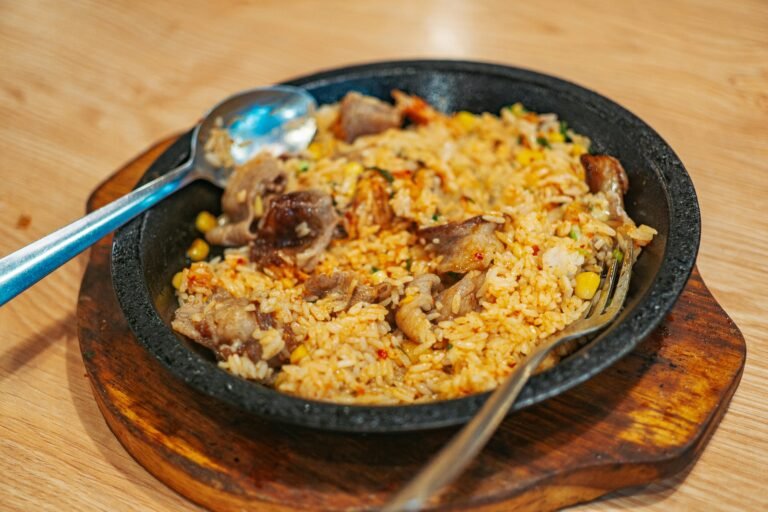Permitting the chicken to marinate nonchicken biryani, a dish dearest by millions, is substantially more than simply a culinary pleasure — it is an image of social variety and a demonstration of the rich history of the districts where it is made. With its starting points covered in secret and its various varieties, chicken biryani is a dish that has gone all over, adjusting to neighborhood tastes and fixing any place it has landed. In this article, we will investigate the geological and social scene of chicken biryani, following where it is made and the way that it has developed into the dish we know today.
Origins of Chicken Biryani
Students of history make jokes about the specific origins of biryani, particularly chicken biryani. Some people assert that the Persian word “biryani,” which means “consumed before cooking,” is where the dish’s origins can be found. Some claim that the Persian technique of layer-cooking rice and meat that the Mughals brought to the Indian subcontinent is where biryani got its start.
Whatever its precise origins, one thing is certain: chicken biryani, at least as far as we are aware, originated on the Indian subcontinent, where it became deeply ingrained in the local cuisine.
Chicken Biryani in India
India is home to the most notable chicken biryani variations around the world. There are critical local varieties in the supper, with each having its extraordinary fixings, cooking strategies, and flavor profiles.
Hyderabadi Biryani: Known for its rich, velvety sauce, Hyderabadi biryani is the most famous sort. Customarily, it is made utilizing the “dam” technique, which is layering and cooking chicken marinated in a marinade in a pot with genuinely cooked rice. The dish is depicted by the utilization of solid flavors, like saffron, to decorate the feast, which is at times finished off with seared onions and sizzling eggs.

- Lucknow (Awadhi) Biryani: Starting from the northern city of Lucknow, this biryani is milder in flavor contrasted with its southern partners. The rice and chicken are cooked independently and afterward layered together, permitting the flavors to merge. The use of fragrant flavors like cardamom and cloves gives it an unquestionable taste, and it is regularly enhanced with a sprinkle of rose water or kewra.
- Kolkata Biryani: Affected by the Awadhi style, Kolkata biryani is novel in its thought of potatoes, which hold the sorts of flavors and add subtle agreeableness to the dish. The rice is cooked with whole flavors, and the chicken is marinated in yogurt and flavors before being slow-cooked.
- Malabar Biryani: From the waterfront region of Kerala comes Malabar biryani, known for its use of short-grain rice (regularly Steerage Samba) and an unquestionably lighter, less smooth status. The dish’s flavor is rich and somewhat sweet because the chicken is cooked with a combination of spices and coconut.
- Ambur Biryani: A less well-known at this point dearest variety, Ambar biryani hails from Tamil Nadu. It is portrayed by its utilization of Seepage Samba rice, an interesting assortment of short-grain rice, and straightforward yet tasty planning utilizing dried chilies, entire flavors, and an insignificant measure of oil.
Chicken Biryani Beyond India
While India is the heartland of chicken biryani, the dish has gone quite far past its lines, changing following new circumstances and culinary traditions.
- Pakistan: Made with a variety of meat cuts, including chicken, biryani is incredibly popular there.
Pakistani biryani is routinely spicier than its Indian accomplices and is much of the time cooked with potatoes, tomatoes, and a rich blend of flavors. Karachi and Sindhi biryanis are especially renowned, each with its particular flavor profile. - Bangladesh: In Bangladesh, biryani is a staple at exceptional events and festivities. Dhaka’s variant is especially renowned, known for its wealth and the utilization of mustard oil, which gives it an interesting flavor. Chicken biryani in Bangladesh is frequently joined by sides like bubbled eggs and fiery chutneys.
- Center East: Biryani has likewise been viewed as a home in the Center East, where fitting nearby tastes has been adjusted. In nations like Saudi Arabia and the UAE, biryani is much of the timeless hot and highlights the utilization of dried foods grown from the ground, giving the dish a somewhat sweet flavor.
- Southeast Asia: The dish has advanced toward nations like Malaysia, Singapore, and Indonesia, where it has been adjusted to nearby palates. In Malaysia, for instance, biryani (referred to locally as “nasi biryani”) frequently incorporates neighborhood flavors and is presented with achar, a sort of cured vegetable.
- Western Nations: With the worldwide diaspora of South Asians, biryani has acquired ubiquity in Western nations too. Eateries in the UK, USA, Canada, and Australia frequently serve different sorts of chicken biryani, in some cases offering combination forms that consolidate conventional recipes with neighborhood fixings.
Conclusion
Chicken biryani is a dish that rises above boundaries, societies, and foods. From the clamoring streets of Hyderabad to the vivacious business areas of Dhaka, from the waterfront kitchens of Kerala to the multicultural metropolitan networks of the Middle East, chicken biryani is made and thoroughly enjoyed in vast assortments. Every variant recounts an account of the district it comes from, mirroring the neighborhood fixings, culinary procedures, and social impacts. Today, chicken biryani keeps on developing, acquiring new fans, and adjusting to new conditions, however continuously holding its center pitch — a delectable, sweet-smelling, and encouraging feast that unites individuals.
